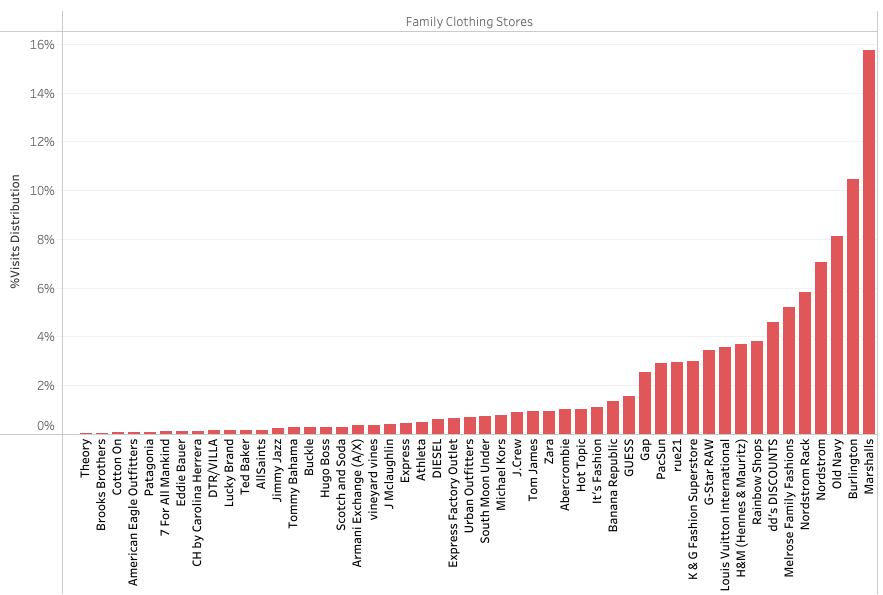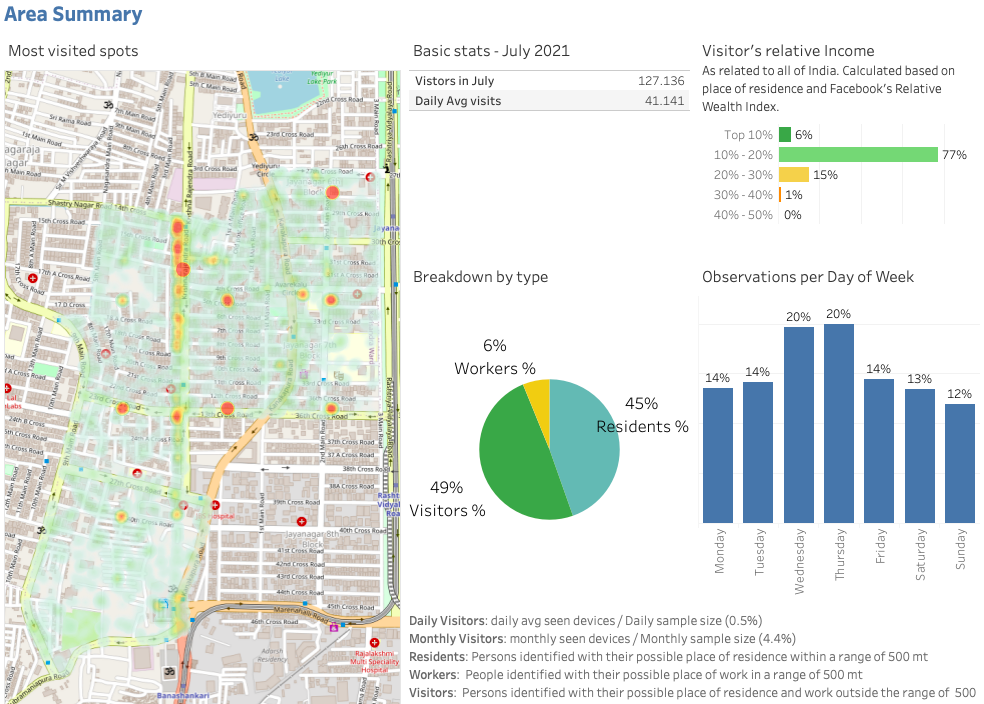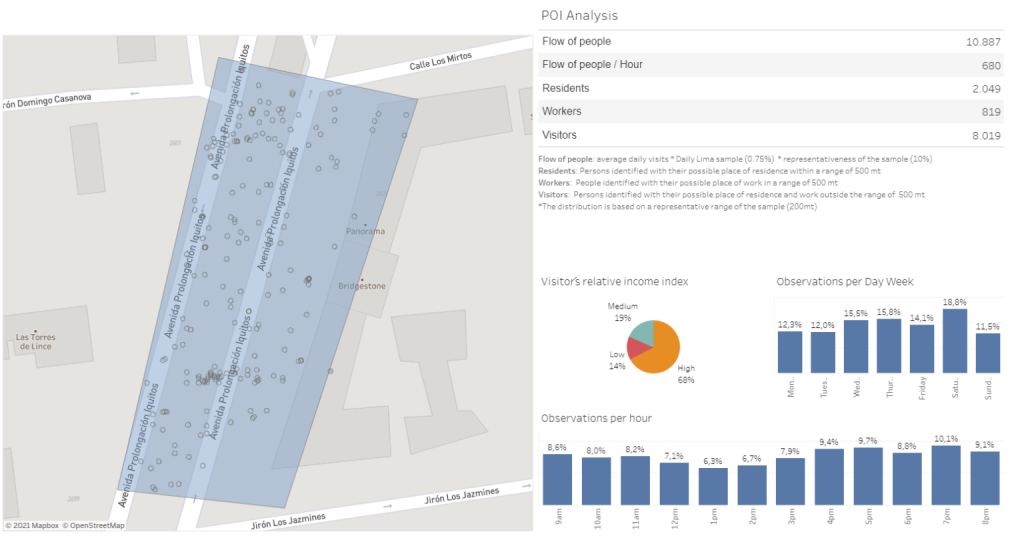Big Data together with mobility analytics and location intelligence techniques allow increasingly accurate estimates of the levels of visits received by points of sale, revealing geographic patterns of brand loyalty and market penetration.
Get to know the competition and how they behave in the market is now possible, thanks to technological tools that provide an overview of mobile device activity associated with brand locations, helping to visualize a detailed picture of consumer engagement, brand loyalty, and market share.
In order to analyze the market share by geography to implement smarter advertising, retailers can use location intelligence techniques and foot traffic data to see which brand has the highest market share in any given business.

These types of insights provide a high-level view of how brands compete in a broad geographic space, serving as the basis for marketing campaigns with a relatively wide reach, such as television commercials or nearby transportation.
Also read: “Location analytics can drive retailers to success: Case Study Home Depot Vs. Ace Hardware“
In order to obtain a more detailed picture, segmentation into zones or points of interest is performed. This generates indicators for businesses to increase advertising on local digital billboards or deploy attractive mobile offers for consumers in the area. Similarly, it is possible to identify which advertising techniques are working and apply them in other locations where it is possible to increase market share.

With an understanding of foot traffic for both their own and competitors’ outlets, brands can accurately plan marketing campaigns and expansion strategies.
[button button_text=”Like what you see? Request a free DEMO” button_style=”style-1″ button_arrow=”true” button_rounded=”true” font=”Default” button_size=”medium” font_size=”” button_icon=”” button_align=”center” padding_v=”” padding_h=”” button_link=”/request_demo/” link_open=”_self” href_title=”” id=”” class=”” bg_color=”” text_color=”” border_size=”” border_color=”” border_radius=”” h_bg_color=”” h_text_color=”” h_border_size=”” h_border_color=”” h_border_radius=”” margin_top=”” margin_bottom=”” margin_left=”” margin_right=””]
Foot traffic data can also be applied to expansion models, regionally, statewide, globally, etc.; by focusing on a specific area, brands can see if their competition has a much larger share of both foot traffic and market penetration.

Taking advantage of this information, retailers can decide where to open or close stores, opting to open more stores in the area to gain more market share or to consolidate stores and focus on a few key locations.
You may be interested in: “Walmart Vs. Soriana: Consumer Foot traffic Analysis“
In order to identify specific areas on which to focus site selection efforts, we can get more details and show consumer trends. This analysis could inspire any business to open another location or serve as a model for which markets to open or avoid when selecting future sites.

At PREDIK Data-Driven we measure how foot traffic has changed over time can help brands identify the relationship between customer loyalty and geographic proximity or convenience, helping companies develop sound data-driven strategies to succeed in their business.
Need to implement this analysis to secure the success of your business? Contact us!

